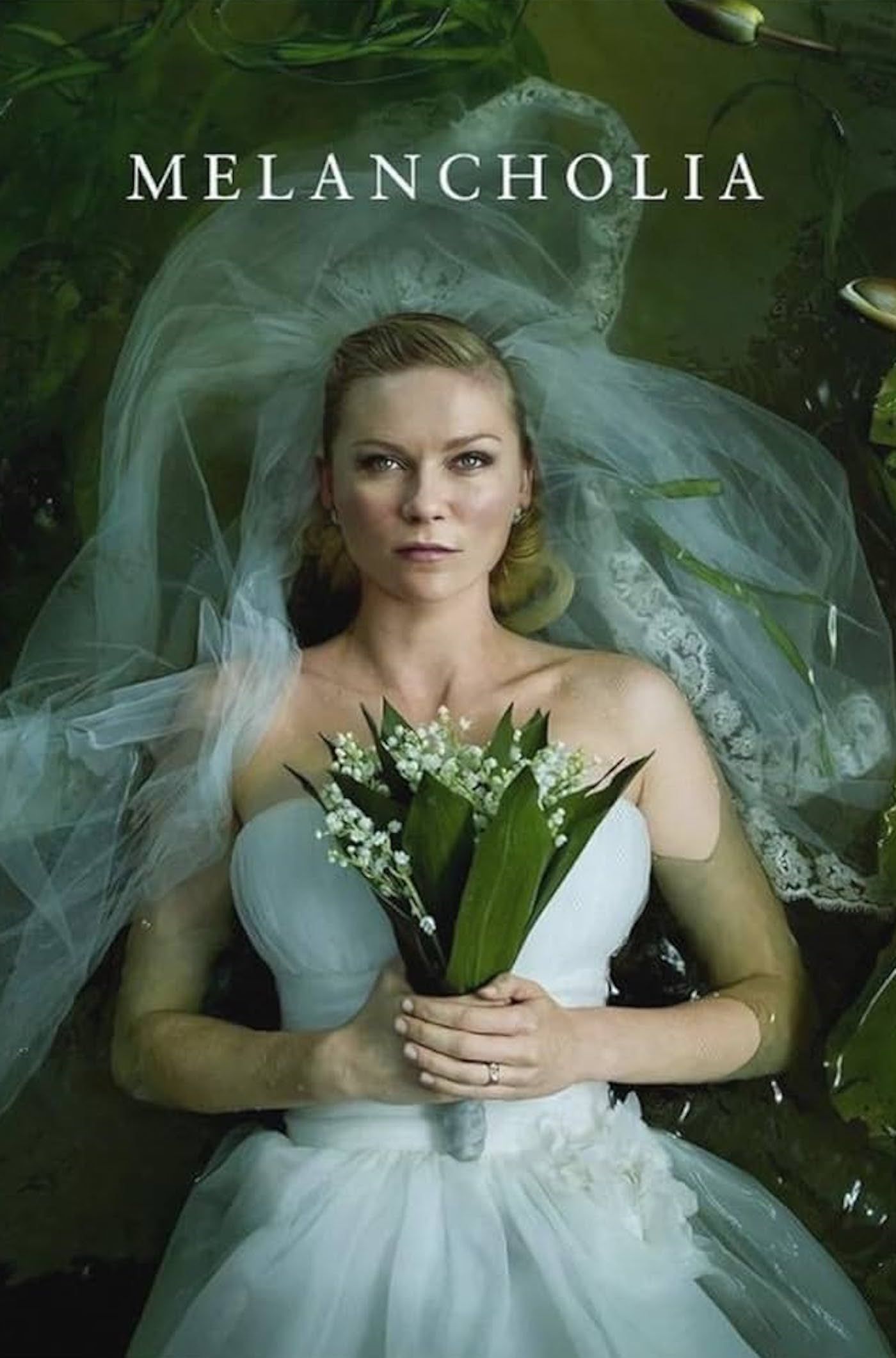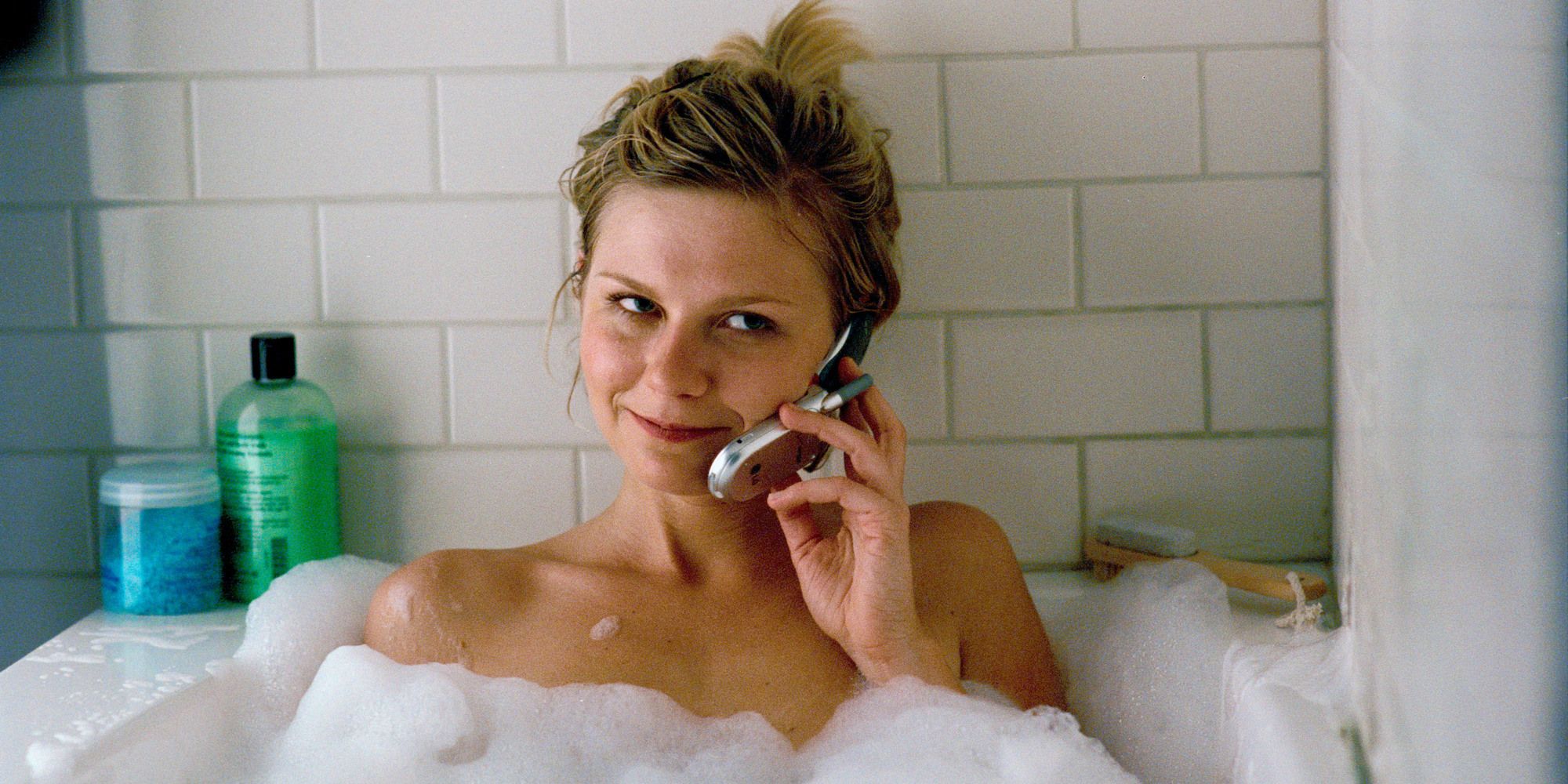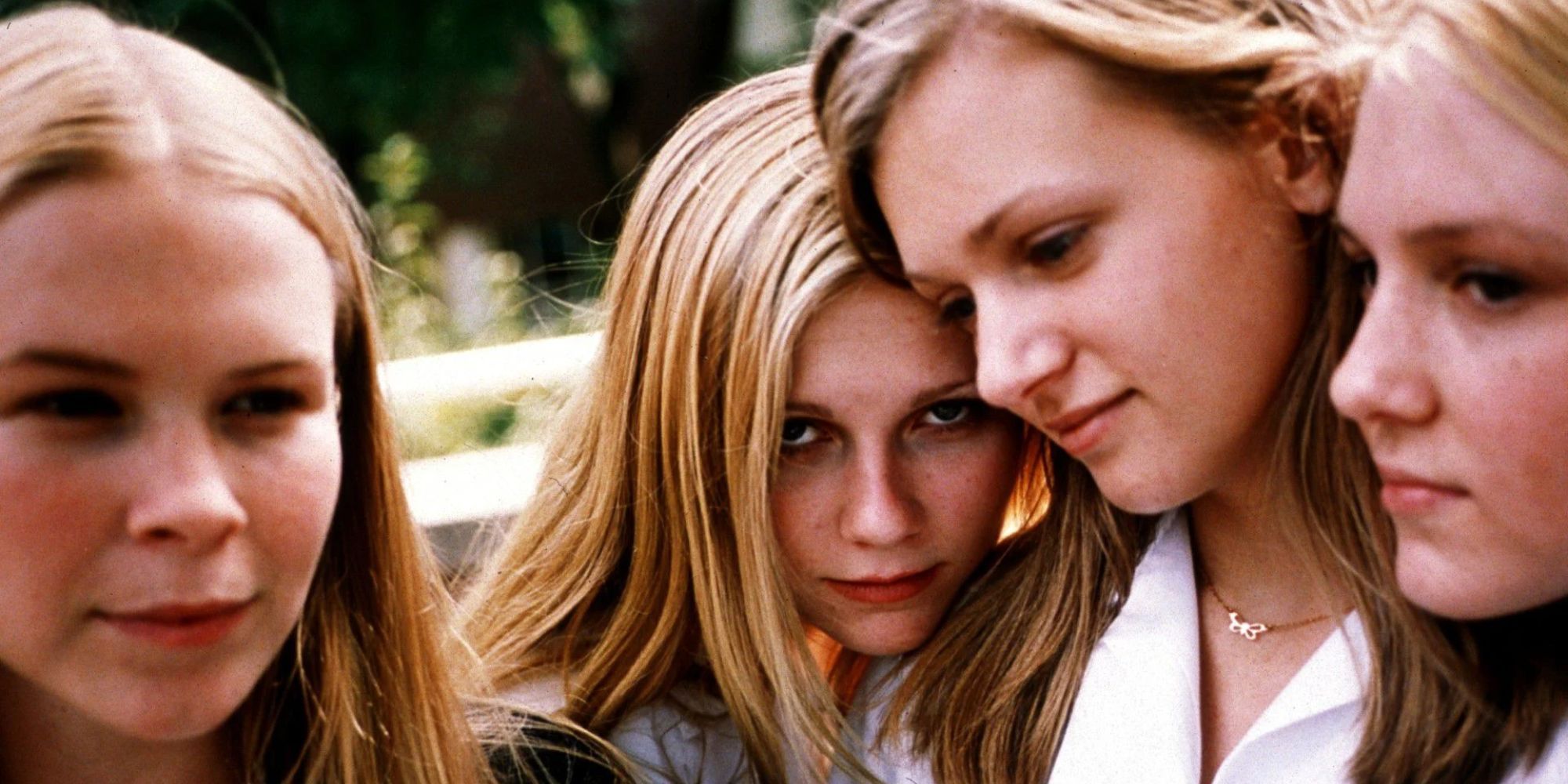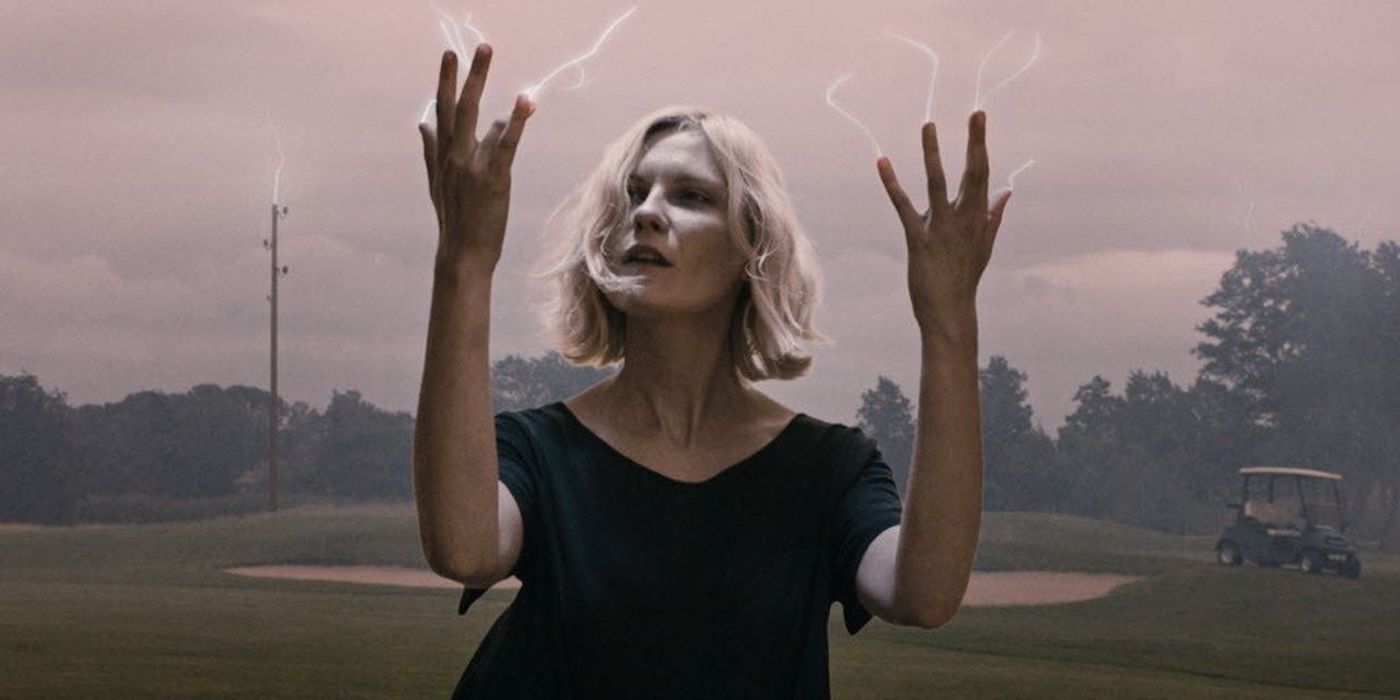A master is born.
The Big Picture
- Dunst’s evolution from child star to award-winning actress is showcased in her defining role in “Melancholia.”
- Through collaborations with vision-driven directors, Dunst has fearlessly explored complex characters with precision and intensity.
- The deep dive into the character of Justine in “Melancholia” earned Dunst her first major award, signaling a career-defining moment.
If you saw Civil War during its record-breaking opening weekend and watched Kirsten Dunst embody the mental ravages of a lifetime spent witnessing war, did you ever stop and think “Remember when she was carrying a Tostitos bag through a fictional war?” Dunst has been a fixture in our pop culture landscape for so long now that she’s been taken for granted, especially when you consider how long it took her to get nominated for an Oscar. It’s not for nothing that all the press surrounding her current career has framed it as a momentous comeback, highlighting the constant challenges in perception she’s undergone throughout her life. Graduating from a promising child acting career intact is no small feat, let alone proving herself to have so many different arrows in her quiver while firing them with ease. An evolution like that takes many stages, and she steadily grew from her naturally sunny aura to adding diverse shades to her repertoire. That transition reached its major turning point when she teamed up with supreme provocateur Lars von Trier for his masterpiece, Melancholia.

Melancholia
Two sisters find their already strained relationship challenged as a mysterious new planet threatens to collide with Earth.
- Release Date
- May 26, 2011
- Director
- Lars von Trier
- Cast
- Kirsten Dunst , Charlotte Gainsbourg , Alexander Skarsgard , Brady Corbet , Cameron Spurr , Charlotte Rampling
- Runtime
- 130 minutes
- Main Genre
- Drama
Kirsten Dunst Started Out as an Effervescent Child Star
Kirsten Dunst started out playing kids that could best be described as “smart asses who are just as rambunctious as they are endearing,” as exemplified by her legendary 1994 double-bill of Interview with the Vampire and Little Women. As Claudia, the young girl turned into a vampire by Lestat (Tom Cruise), Dunst gives us a precursor of the work she would eventually do with her greatest influence, Sofia Coppola. Claudia yearns too thirstily for the pleasures of vampire life but is also tortured by the eternal youth she’s been cursed with, raging against the gilded cage she didn’t ask for. It was a performance so powerful that Anne Rice, the author of the original novel, spoke out about how much love she felt for her.
As Amy, the youngest sister of the March family, she’s eager to take the crumbs of attention that she can, performing little acts of whimsy to cover for an insecurity of love. From appreciating the divinity of butter to burning the manuscript of her sister Jo (Winona Ryder), Amy makes herself known at all times, often serving as the spark the family needs to bring some of their underlying anxieties to light. Dunst would continue this trend of playing kids who are unafraid to stand up for themselves in films like Jumanji and Small Soldiers but underwent a significant shift once she hit her teenage years.
‘The Virgin Suicides’ Kickstarted Kirsten Dunst’s Mature Career
With The Virgin Suicides, playing a teenage girl who yearns to overcome the disappointments of life, Dunst moved into her adult years with a renewed feeling of security and belief in herself. She has always been outspoken about how much importance writer-director Sofia Coppola has to her, indicating how she was the first person in the industry who really made her feel beautiful and accepted for who she was, and that gave her the confidence to embrace roles that let her be more flawed. Films like Drop Dead Gorgeous and Dick let her play into her comedic side more, providing a more biting commentary on the pros and cons of being a teenager while maneuvering the adult world of America.

A Kirsten Dunst Character Invented the “Manic Pixie Dream Girl” Trope
Nathan Rabin’s critique of Dunst’s character sparked the discussion around the quirky magic girl trope
The combined releases of Bring It On, Crazy/Beautiful, and The Cat’s Meow positioned her as officially moving into the realm of “movie star,” proclaiming herself as fully tapped into her powers and ready to experiment with them. This period would carry her throughout the 2000s, fitting herself perfectly into numerous genres, including the pop art highs of the Spider-Man trilogy, the snappily cute rom-com world of Wimbledon, and the riot grrl revisionism of Marie Antoinette. What binds these roles together is the marriage between the flinty resolve and aching for understanding that she brings to them all, upfront with their desires and pragmatic in their conception of their own worlds. Nevertheless, this streak wasn’t satisfying enough, especially for someone as auteur-driven as Dunst, and she sought out a new challenge. Luckily for her, she would cross paths with just the right people who would set her on a new path.
Paul Thomas Anderson Suggested Dunst to Lars von Trier
Kirsten Dunst first came into Von Trier’s purview thanks to the advocacy of another noted cinematic troublemaker, Paul Thomas Anderson. Von Trier said in Melancholia‘s Cannes press conference that he’d been contemplating the idea of Melancholia for years, and was discussing it with PTA. Despite having never personally worked with her on a project, Anderson vouched for Kirsten Dunst. This was intriguing to Von Trier, as he had seen her in many things, but had never worked with her, either. When the two got in touch and discussed the role, Von Trier was particularly impressed by her being in touch with her own experience with depression, even going so far as to show him photos of herself she had taken in that state of mind. Since Melancholia would be a film fundamentally about depression and its destructive effects on people, Von Trier felt this gave her an important sense of memory that other actors wouldn’t be able to harness. Despite the heaviness of the material, Dunst would look back on this film fondly, citing it as “beautiful” and recalling how she felt especially proud of this film, citing how difficult it is to portray depression onscreen. That difficult gamble paid off, as Von Trier and Dunst collaborated to make one of the greatest artistic statements on depression ever put to film.
Kirsten Dunst Gives the Defining Performance of Her Career in ‘Melancholia’
Serving as a metaphor for the all-encompassing deathgrip that depression can have and the idea that those with depression are more mentally prepared for catastrophes, “Melancholia” is the world’s worst wedding crasher in the form of a planet. When Justine (Dunst) regresses into a major depressive episode that leads her to quit her oppressive job and torpedo the empty marriage she just committed to, a giant planet is slowly coming to crash into Earth, leaving her and her family to sit and deal with it. Everyone else is petrified and steadily incapable of confronting their fate, but Justine grows more focused and at peace; now that the world is in a situation that she’s been mentally ready to embrace for most of her adult life. A woman utterly despondent and hopeless becomes one who is resigned yet satisfied, content with her place in the cosmos. For a film that gives almost no exposition about its characters, borrowing from the infamous Dogme 95 style of storytelling, we get such a vivid picture of who Justine is and that’s because of Dunst’s devoted performance. You can feel how much she’s trying to make the best of a life choice she seemingly didn’t ask for, often stuck gazing into the abyss by herself, waiting for something in her life to make sense.
Dunst was correct in her assessment that depression is hard to depict visually, as it often comes across as a blandly numbed experience, defined solely by anhedonia. What Dunst taps into is when the paralysis is so extreme that it becomes abject pain, rendering her barely above a vegetative state. At points, it’s so severe that she can barely lift herself out of a bathtub or walk herself downstairs, needing her sister, Claire (Charlotte Gainsbourg), to lead her to the table, all while mewling like an injured animal. It’s so soul-draining that even eating is too much, as food that she loves now “tastes like ashes,” spoken with a quaking brittleness that shatters more than a full monologue could convey. It isn’t until the planet gets closer that Justine starts to evolve, becoming more cutting and unsentimental in her nihilism. She harbors no desire to entertain any notions of survival, believing life on Earth to be “evil” and destined to be short-lived. This leads to a conflict with Claire, who is frantic in her need to be consoled, and Justine constantly repudiates her efforts to connect before it’s too late, with no empathy or consideration. Coupled with this is her radical acceptance of oblivion, with an undertone of relieved appreciation hiding in plain sight, with traces of Dunst’s signature Cheshire Cat grin belying the fate she’s longed for.
Kirsten Dunst’s Commitment to Strong Visions Has Led To Her Continued Excellence
What made this performance different from what Dunst had done before was how much she committed to the ugliest aspects of her character, with no apologizing. While many of her previous characters could be said to have unflattering traits, the films usually worked to massage those faults and remind us of how worthy of our admiration or empathy they were. Justine is a person who actively drowns herself in her vices and pushes away any sense of endearment, all while the film endorses her by adopting her viewpoint and emphasizing how her mental health leads her to know things others don’t. The way she swings from drain-circling physical despair to being preternaturally wise about the absurdity of human existence provided Dunst with the richest character arc of her career at that stage, which she carried off with deceptive precision. So much so that, when Melancholia was released at the Cannes Film Festival, it led to Kirsten Dunst winning Best Actress, somehow the first major award recognition of her career. Many critics also pointed out what a watershed moment this was for her career, as this was a performance with an intensity and depth of tragedy that she hadn’t channeled before.
This would become the fork in the road moment of her career, where she officially moved beyond the cool All-American girl energy that was her staple and redefined herself as a performer adept at covering her intensely bubbling core with a hardened shell. While this has led her to commit to generally harsher dramas, even her comedic work tends to revolve around women struggling to keep their anxieties and nefarious deeds at bay, like in her season of Fargo or her underseen show On Becoming a God in Central Florida. Fulfilling the potential of her initial confidence boost as a teenager, she became more selective with her projects and devoted herself to working with the most vision-driven directors in the business, including reuniting with Coppola, and working with Jeff Nichols, and Jane Campion. Be it the repressed hunger of Edwina in The Beguiled or the steadily desperate sickness of Rose in The Power of the Dog, Kirsten Dunst has continued to prove herself as fearless in the depths to which she’ll explore for the inner truth, keeping us glued to her every little motion, eager to know what’s really going on inside. If Civil War is any indication, she’s still got that spark of truth bursting behind those eyes. To borrow a phrase from one of the seminal films of her career, may the Dunst-ocracy continue to reign!
Melancholia can be watched on Netflix in the U.S.
This article was originally published on collider.com




